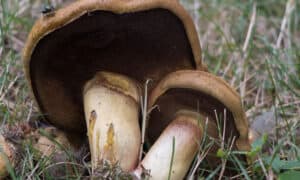Do you want to get into foraging or identifying wild mushrooms, but not sure if you live in an ideal area? Well, thousands of species of mushrooms are widespread across all continents except Antarctica. So, chances are you live in an area where you can come across a number of different mushroom species. Additionally, you may also happen to live in or near an area known for an abundance of highly-sought after wild mushrooms, such as various types of morels. You may also be lucky and have in-person access to a reputable, well-established mushroom club, where you can really improve your foraging skills and network with other mycophiles!
In this guide, we’ll cover five of the best counties for mushroom foraging in the US that include places that are well-known for certain popular mushrooms and have awesome mycological clubs. We’ll also name some specific parks and public nature areas that are ideal for mushroom foraging.
It’s important to note, however, that some parks and nature preserves don’t allow the collecting of mushrooms, so it’s best to familiarize yourself with the various regulations of public areas before heading out.
Read on to learn more!
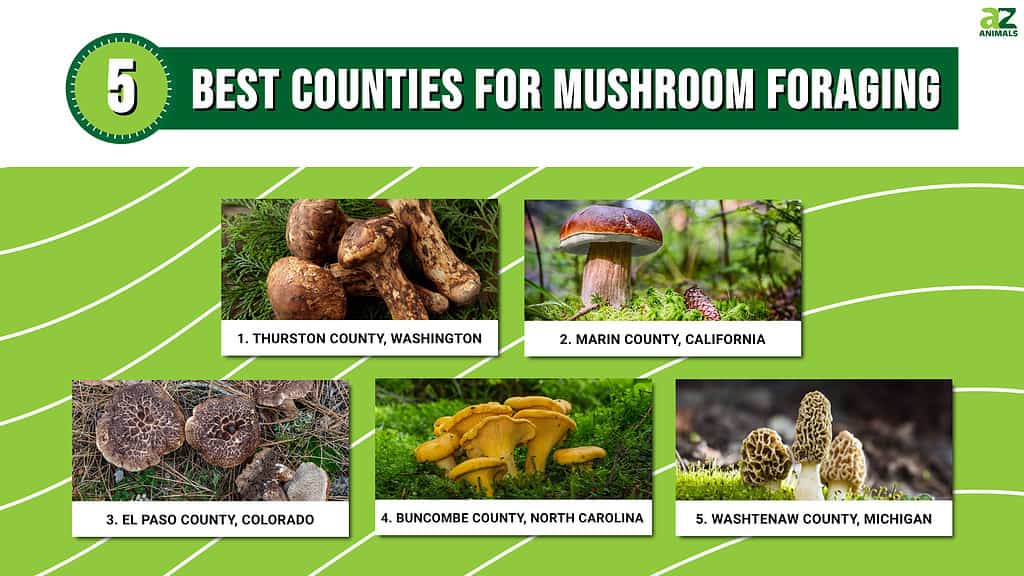
Best Counties for Mushroom Foraging: Before You Head Out
While ecologically-oriented mushroom foraging is a wonderful activity, there are a few things you should know and be aware of before heading out:
- First and foremost, only consume mushrooms that you have 100% certain of edibility and identification. If you aren’t an experienced forager, please begin your hunts with a mushroom expert. This is not only the safest practice, but foraging with an expert will also help you learn.
- Take photos and make notes! Taking photos of mushrooms at various stages of their life cycles and making notes of the immediate and surrounding environment will help you learn. You can bring these photos to your next mycological meet-up or post them on reputable sites and forums for discussion.
- Ideally, bring a woven basket or mesh bag to carry your mushrooms. This will allow airflow to the mushrooms and encourage spore dispersal as you walk about the forest or meadow.
- Harvest in a considerate manner and only forage what you will reasonably consume or study. Remember that fungi play many vital roles in our ecosystem and that other forest critters also depend on mushrooms for food.
- Tread lightly. Try to harvest carefully so as not to unnecessarily disturb the environment.
5 of the Best Counties for Mushroom Foraging
Getting started with mushroom foraging can be a bit of a daunting experience. You may feel quite concerned about consuming a misidentified mushroom, and for good reason. While only about 1-2% of all currently identified mushrooms are known to be seriously poisonous, it’s still incredibly important to be well-informed on the mushroom species you’re foraging for and any potential look-alikes. One great way to begin safer foraging practices is to join a reputable in-person mycological club and attend group mushroom hunts led by a mushroom expert. The following list is comprised of counties that boast delicious wild mushrooms and active mycological groups:
- Thurston County, Washington
- Marin County, California
- El Paso County, Colorado
- Buncombe County, North Carolina
- Washtenaw County, Michigan
1. Thurston County, Washington
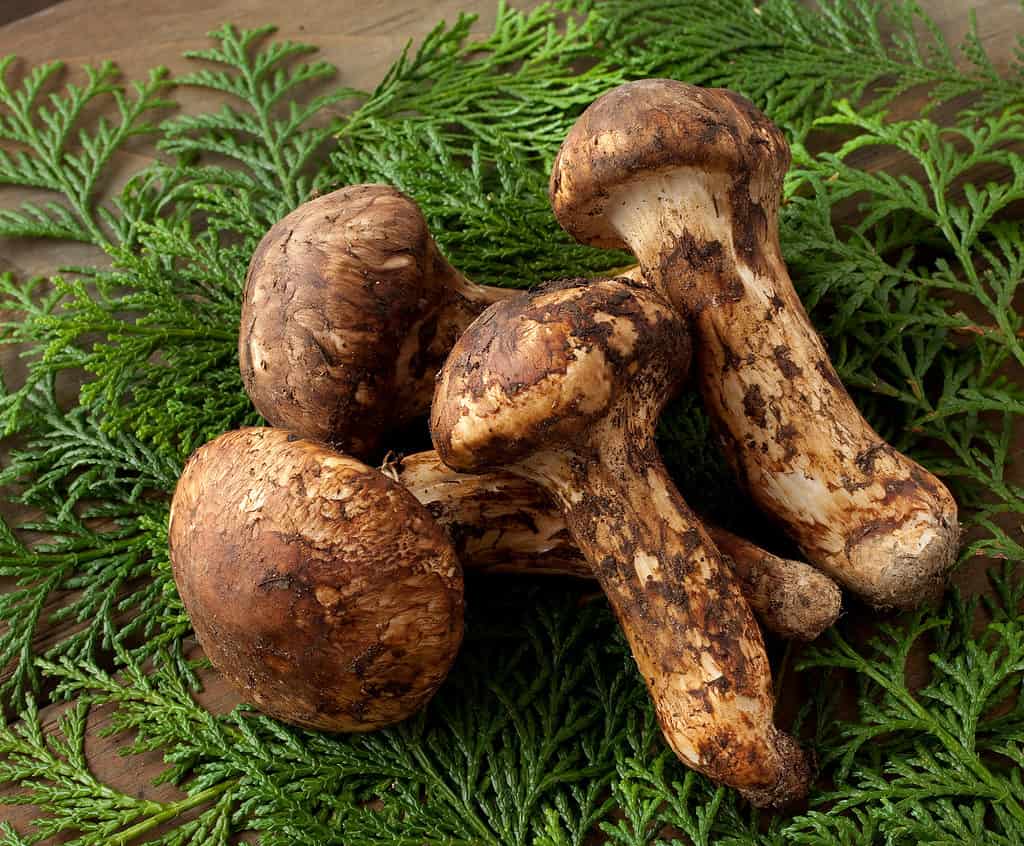
Matsutake mushrooms laid out on ferns.
©ykokamoto/Shutterstock.com
The Pacific Northwest is absolutely overflowing with mushrooms, mycophiles, and mycological societies. Thurston County, home to the South Sound Mushroom Club, is an amazing area for mushroom hunting. By joining the South Sound Mushroom Club, you can connect to monthly meetings, mushroom hunts (forays), online and in-person events, and even weekend getaways.
You can forage daily for up to 3 gallons of mushrooms for personal use in the gorgeous Olympic National Forest. In the Olympic National Park, you can harvest up to one quart of mushrooms per day for personal use.
Some of the delicious edible mushrooms you may find on your mushroom hunts include:
- Boletus edulis (king bolete)
- Chanterelles (Cantharellus spp.) including C. formosus and C. cascadensis
- Morels (Morchella spp.) including M. rufobrunnea, M. americana, and M. populiphila
- American Matsutake (Tricholoma spp.) specifically T. murrillianum, T. magnivelare, and T. mesoamericanum
- Hydnum washingtonianum
2. Best Counties for Mushroom Foraging: Marin County, California
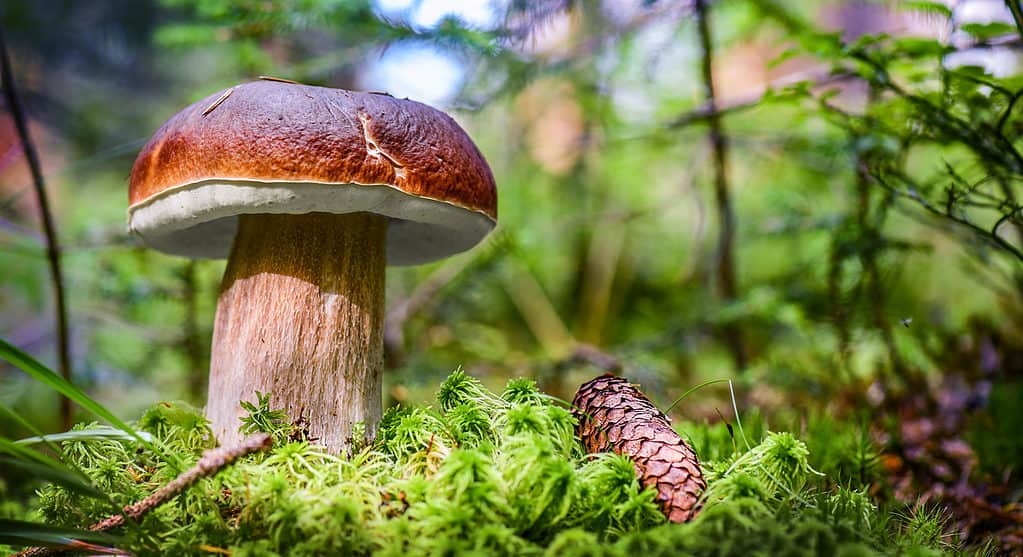
The King Bolete mushroom, Boletus edulis, grows in California, and is a prized edible.
©Krasula/Shutterstock.com
Home to some choice edible mushrooms and close to the Bay Area Mycological Society, Marin County in California is an awesome location for those interested in foraging for mushrooms.
Joining up with this long-standing mycological club is an excellent way to make like-minded friends, go on informed mushroom walks, and attend in-person and online educational meetings.
Marin County is home to some incredible public forests and trails that are brimming with fungal life. You can forage for mushrooms at a number of locations (with some limitations dependent on location) including the Point Reyes National Seashore, Muir Woods National Monument, Roy’s Redwoods Open Space Preserve, and the Samuel P. Taylor State Park.
Some lovely edible species that call these environments home include the following:
- Morels (Morchella spp.) including M. rufobrunnea and M. americana
- Chanterelles (Cantharellus spp.) including Cantharellus californicus, C. subalbidus, and C. roseocanus
- Boletus edulis (king bolete)
- Craterellus calicornucopioides (black trumpet)
- Pleurotus ostreatus (common oyster)
3. El Paso County, Colorado
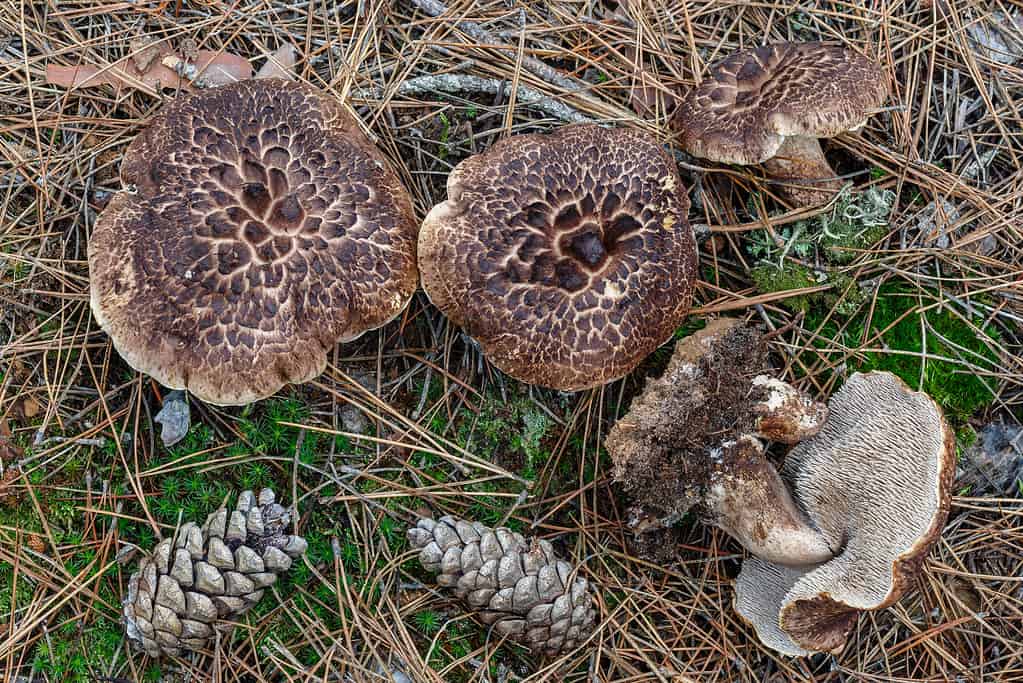
A detailed pic of the top and bottom of Sarcodon imbricatus.
©LFRabanedo/Shutterstock.com
If you live in or near El Paso County, Colorado, you can find some wonderful, wild edible mushrooms. You can also link up with the Pikes Peak Mycological Society for group mushroom forays, documentaries, meetings, and classes!
Several of the more popular edible mushrooms in this region live in higher altitudes (often above 9,000 feet) in mixed conifer forests in the Rocky Mountains. So, if you’re a fan of hiking in the Rockies, foraging in this region may be doubly exciting for you.
One of your best bets in this region is to forage for mushrooms on land maintained by the Bureau of Land Management (BLM). Often, harvesting is limited to one gallon per person per day, but make sure to check specific regulations for your area before foraging. You can also check national forests in this area, but you may need to obtain a personal foraging permit.
Some wonderful edible mushrooms that you can happen upon in this area include:
- Boletus rubriceps (the Rocky Mountain red king bolete)
- Calvatia booniana (The western giant puffball)
- Cantharellus roseocanus (rainbow chanterelle)
- Morels (Morchella spp.) including M. americana and M. tomentosa
- Sarcodon imbricatus (hawk’s wings)
4. Buncombe County, North Carolina
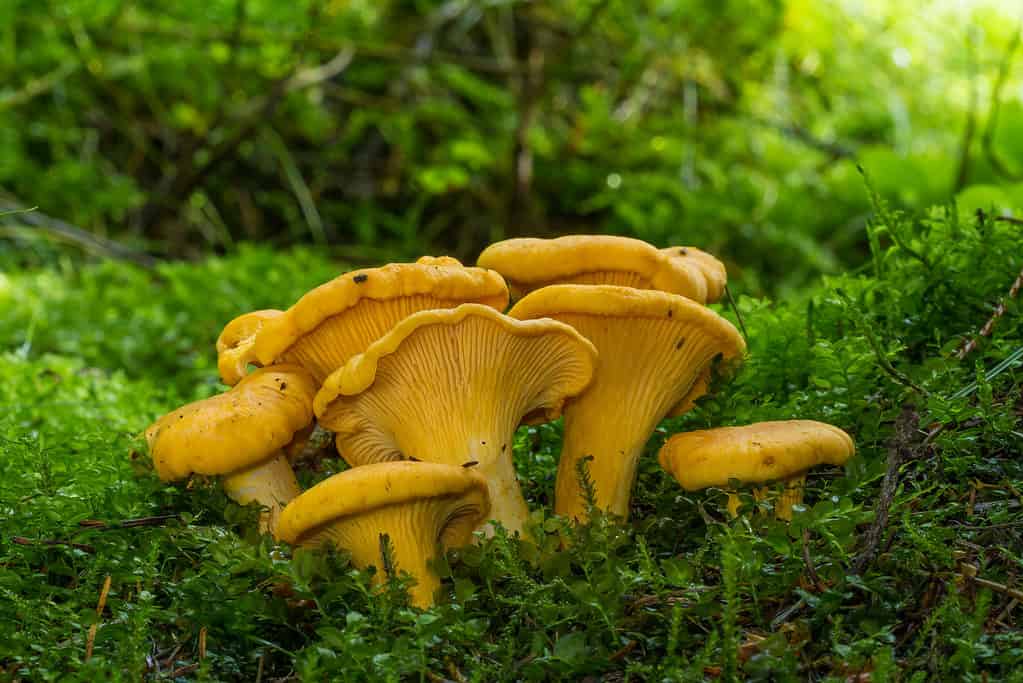
Golden chanterelles growing in the forest.
©godi photo/Shutterstock.com
Buncombe County, North Carolina is home to stunning wilderness areas of the Blue Ridge Mountains where the informed forager can find several wonderful edible species of mushrooms. Additionally, if you live in or near this area and are interested in mycology, you can join the Asheville Mushroom Club for in-person and online classes, programs, and forays.
You may find great success foraging in areas of the Pisgah National Forest such as Big Ivy (aka Coleman Boundary). You may need a free permit to forage mushrooms in the Pisgah and Nantahala National Forest.
In this area, you may have success finding the following good edible mushroom species:
- Chanterelles (Cantharellus spp.) including C. confluens, C. appalachiensis, and C. cinnabarinus
- Morchella americana (blonde morel)
- Laetiporus spp. (chicken of the woods)
- Hydnum spp. (eastern Noth American hedgehog mushroom)
- Lactifluus spp. (milk caps)
- Sparassis spp. (cauliflower mushroom)
- Hericium spp. (lion’s mane and similar)
- Grifola frondosa (hen of the woods)
- Pleurotus ostreatus (common oyster mushroom)
- Craterellus fallax (black trumpet)
- and many many more, the southern Appalachians has a lot of diversity
5. Best Counties for Mushroom Foraging: Washtenaw County, Michigan
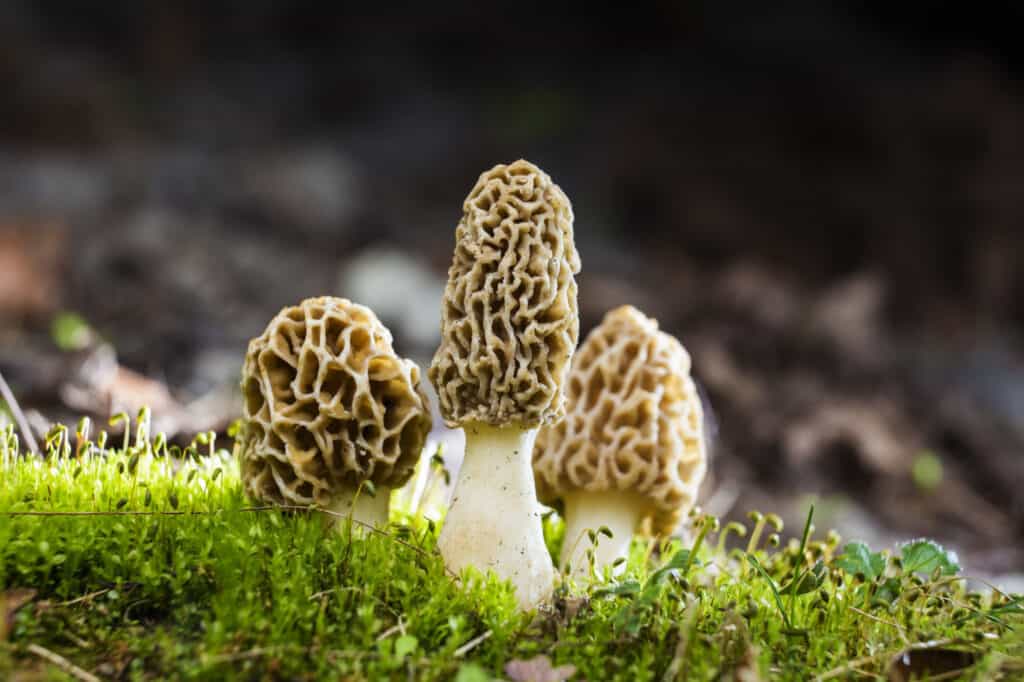
Prized for their flavor, morels must be cooked before eating.
©Mircea Costina/Shutterstock.com
If you live in Washtenaw County, Michigan, and are interested in mushroom foraging, you’re in luck! Not only are there some choice edible mushrooms that grow wild in this region, but the natural recreation areas of Washtenaw County are also a frequent destination of the Michigan Mushroom Hunters Club. This club offers educational events, field ID trips, an annual fungi festival, social gatherings, and both public and members-only mushroom hunts!
Popular locations for mushroom hunting in Washtenaw County include Waterloo State Recreation Area and Pickney Recreation Area.
In these areas, you may have success finding the following popular edible mushrooms:
- Morels (Morchella spp.) including M. angusticeps and Morchella americana
- Grifola frondosa (hen of the woods)
- Laetiporus sp. (chicken of the woods)
- Chanterelles (Cantharellus spp.) of the cibarius-like species possibly including Cantharellus phasmatis and Cantharellus flavus
- Oyster mushrooms (Pleurotus spp.) specifically P. pulmonarius, P. ostreatus, and P. populinus
Summary Of The 5 Best Counties For Mushroom Foraging
| Rank | County | Some Of The Mushroom Types |
|---|---|---|
| 1 | Thurston County, Washington | King bolete, Chanterelles, Morels |
| 2 | Marin County, California | Morels, Chanterelles, Common Oyster |
| 3 | El Paso County, Colorado | Western giant puffball, Rainbow Chanterelle, Hawk’s Wing |
| 4 | Buncombe County, North Carolina | Chanterelle, Blond Morel, Cauliflower mushroom, Lion’s Mane, |
| 5 | Washtenaw County, Michigan | Morels, Hen of the Woods, Chicken of the Woods |
The photo featured at the top of this post is © iStock.com/dolgachov
The information presented on or through the Website is made available solely for general informational purposes. We do not warrant the accuracy, completeness, or usefulness of this information. Any reliance you place on such information is strictly at your own risk. We disclaim all liability and responsibility arising from any reliance placed on such materials by you or any other visitor to the Website, or by anyone who may be informed of any of its contents. None of the statements or claims on the Website should be taken as medical advice, health advice, or as confirmation that a plant, fungus, or other item is safe for consumption or will provide any health benefits. Anyone considering the health benefits of particular plant, fungus, or other item should first consult with a doctor or other medical professional. The statements made within this Website have not been evaluated by the Food and Drug Administration. These statements are not intended to diagnose, treat, cure or prevent any disease.
Thank you for reading! Have some feedback for us? Contact the AZ Animals editorial team.



